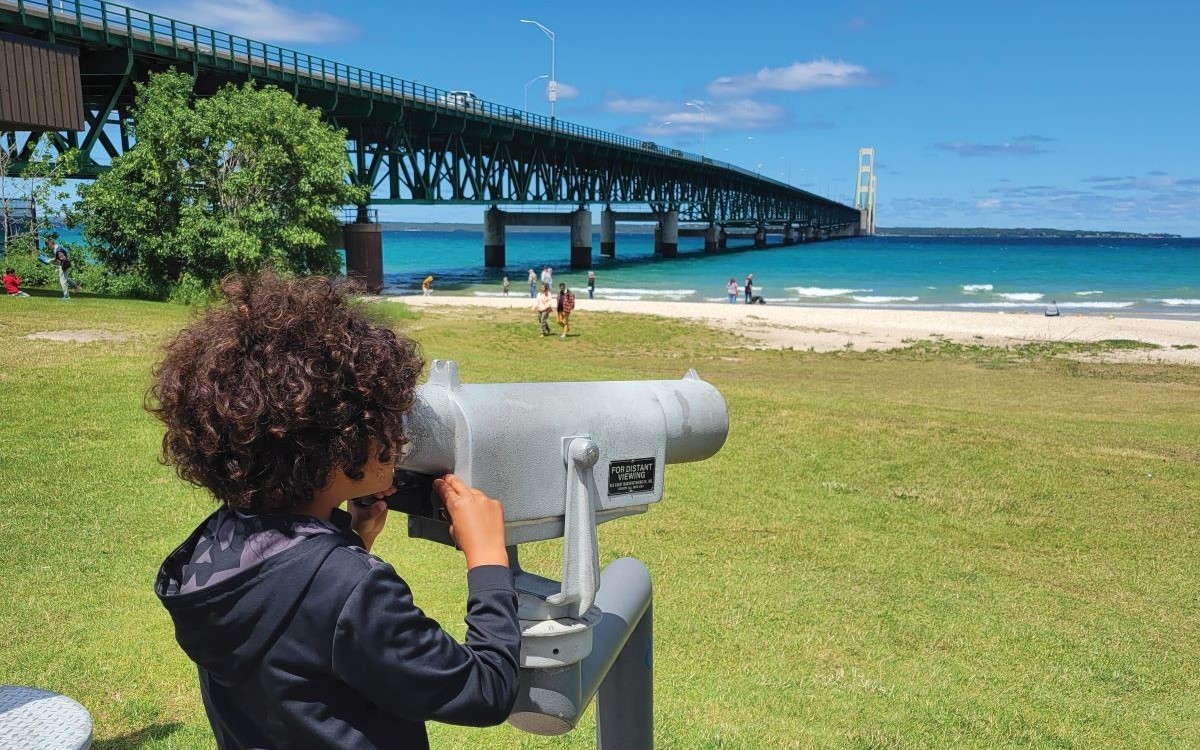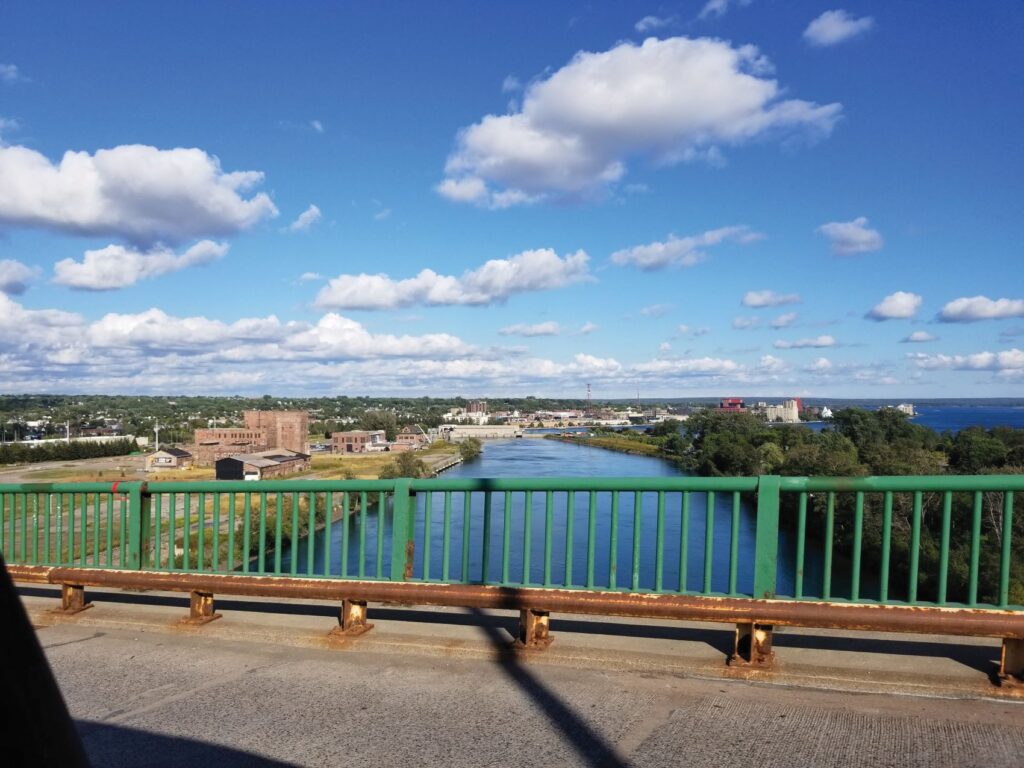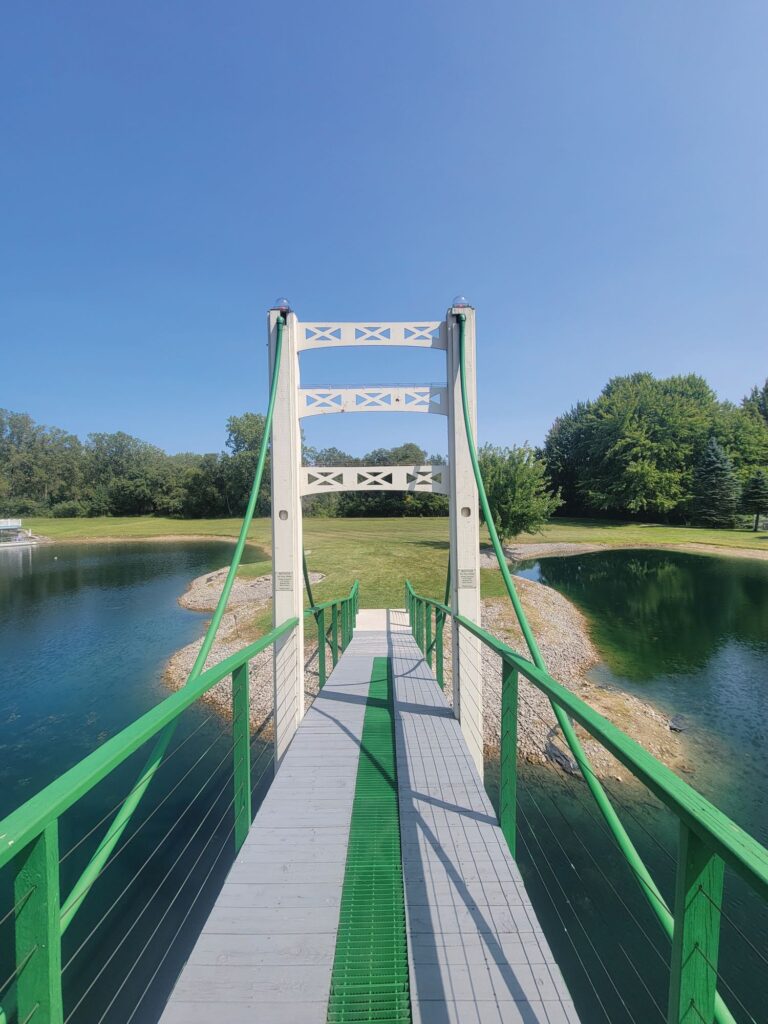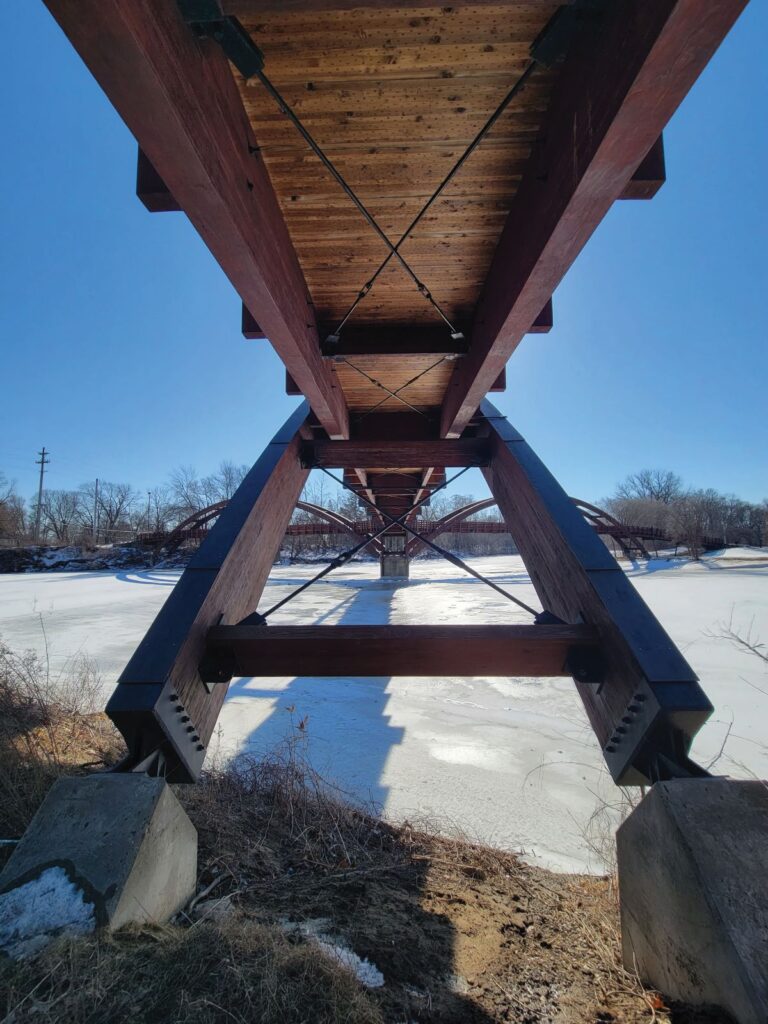Michigan’s unique geography—with over 11,000 inland lakes, 120 major rivers, and borders on four Great Lakes—has made bridges essential to connecting people, peninsulas, and even countries. The state boasts more than 11,000 bridges, each with a distinct story and role in Michigan’s landscape.
International Bridges
Three major bridges connect Michigan to Canada. The Ambassador Bridge, opened in 1929, links Detroit and Windsor and remains the busiest international land border crossing in North America.
The Blue Water Bridge, built in 1938 and twinned in 1997, connects Port Huron to Sarnia, Ontario.
In the Upper Peninsula, the Sault Ste. Marie International Bridge spans the St. Mary’s River, linking the twin cities of Sault Ste. Marie in Michigan and Ontario. The bridge overlooks the Soo Locks, a critical shipping passage between Lake Superior and the lower Great Lakes.
Iconic Michigan Spans
The most famous bridge in Michigan is the Mackinac Bridge, also known as “Mighty Mac” or “Big Mac.” Opened in 1957, it spans five miles across the Straits of Mackinac, linking Michigan’s upper and lower peninsulas. It remains one of the longest suspension bridges in the Western Hemisphere.
Opened in 1959, the Portage Lake Lift Bridge connects Houghton and Hancock in the Upper Peninsula. It’s the world’s heaviest and widest double-deck vertical lift bridge. In winter, its lower deck is lowered for snowmobiles while vehicles continue on the upper level.
Miniature and Replica Bridges
Several pedestrian bridges celebrate the Mighty Mac. In St. Louis, the 120-foot Mini Mac Bridge spans a pond shaped like the Lower Peninsula.
In Reed City’s Rambadt Park, the Little Mac Bridge is a 150-foot-long wooden suspension bridge crossing the Hersey River.
Near Mesick, the Little Mac Footbridge—at 246 feet—is the longest wooden suspension bridge in the Lower Peninsula and links the Manistee River Trail with the North Country Trail.
Parks with Notable Bridges
Historic Bridge Park in Battle Creek features restored 19th- and early 20th-century truss bridges, picnic areas, trails, and educational displays.
McCourtie Park in Cement City has 17 whimsical concrete bridges designed in faux bois style, mimicking wood textures. The park sits on the former estate of cement magnate W.H.L. McCourtie.
In Croswell, the Swinging Bridge—built in 1905—is a 139-foot pedestrian bridge made of wire cables and wooden planks. It was originally constructed by the Michigan Sugar Company for worker access.
Deerfield Nature Park in Isabella County includes four bridges: two swinging suspension bridges, the Lewis Pontiac Bridge, and the Fisher Annex Covered Bridge, which was rebuilt after a 1995 fire.
Covered Bridges
Michigan is home to several historical covered bridges. White’s Covered Bridge, built in 1867 over the Flat River near Smyrna, was rebuilt after a 2013 fire.
The Ada Covered Bridge, also erected in 1867, spans the Thornapple River and was restored in 1979.
North of Lowell, the Fallasburg Covered Bridge (1871) is part of a preserved historic village and is still open to vehicle traffic.
The Langley Covered Bridge, built in 1887 near Centreville, is the longest covered bridge in Michigan at 282 feet and remains open to vehicles.
In the 1960s, Pierce Stocking designed a scenic bridge that’s now part of the Sleeping Bear Dunes National Lakeshore. It was reconstructed in 1986.
In Frankenmuth, the Holz Brucke Covered Bridge (1979) crosses the Cass River and is open to both vehicles and pedestrians, complementing the town’s Bavarian charm.
Unique and Scenic Crossings
In Midland, The Tridge is a three-way wooden footbridge built in 1981 where the Chippewa and Tittabawassee Rivers meet, linking three parks and paths.
At Boyne Mountain, the SkyBridge is the world’s longest timber-towered suspension bridge at1,200 feet. It includes a glass floor section suspended 118 feet above a forested valley.









